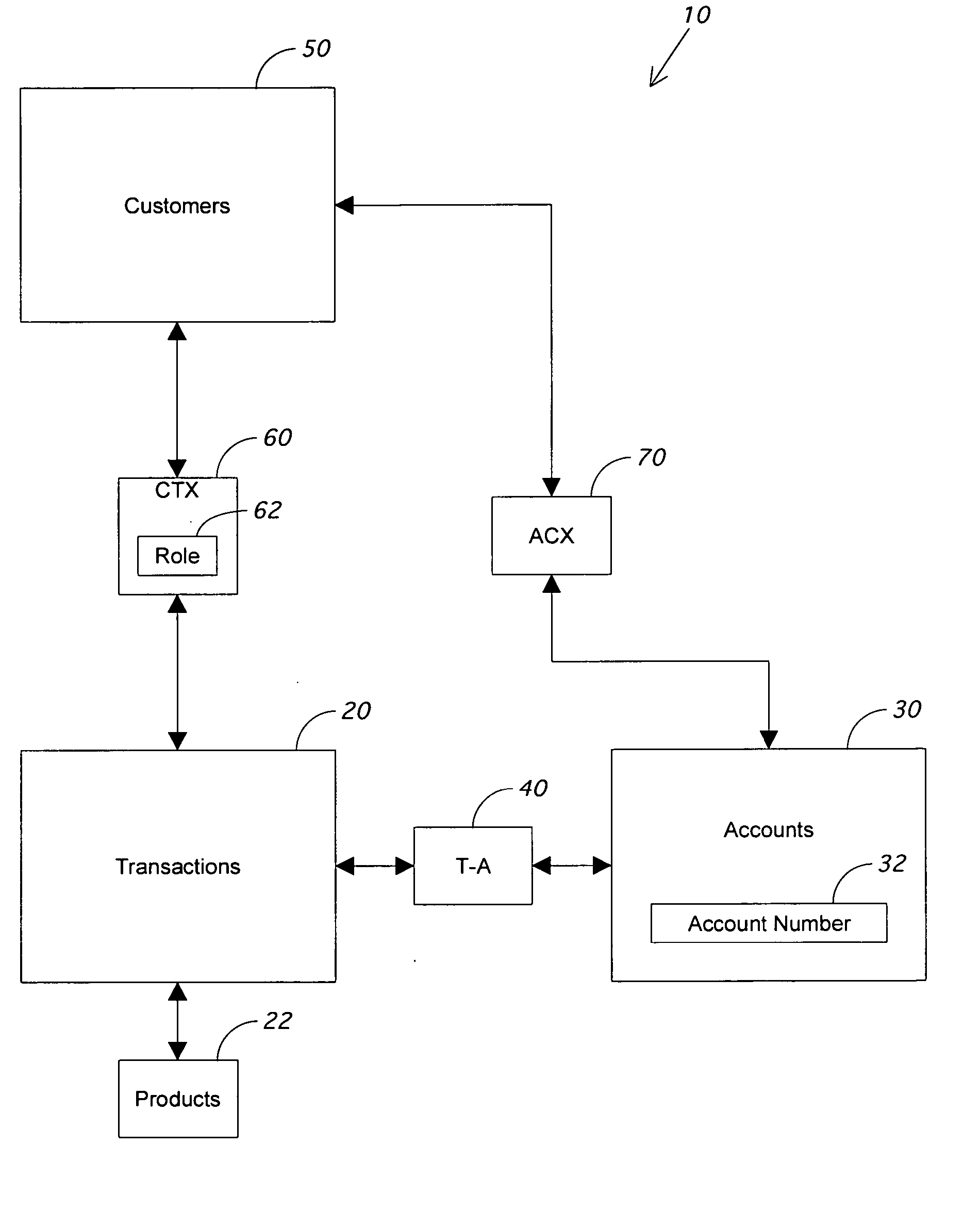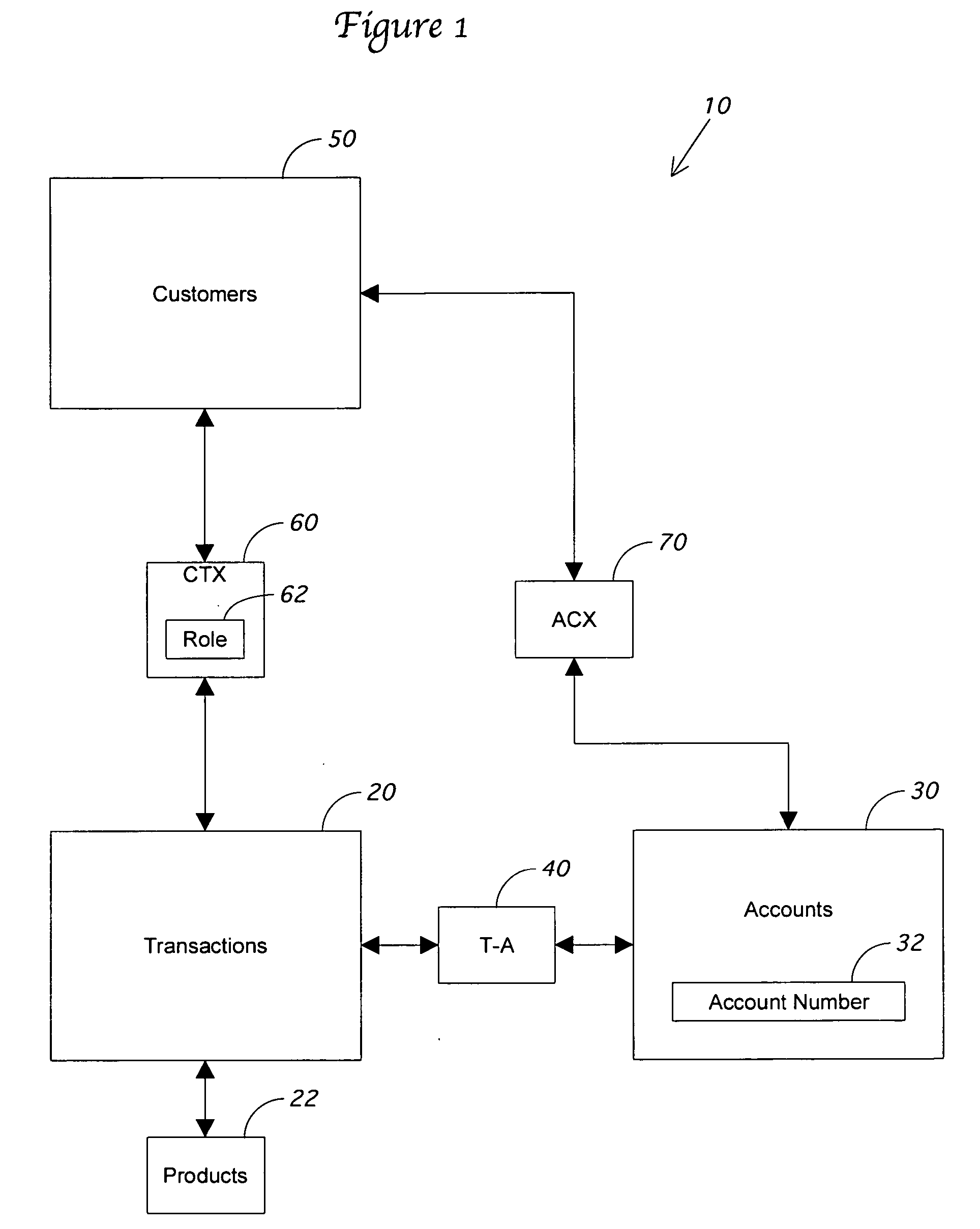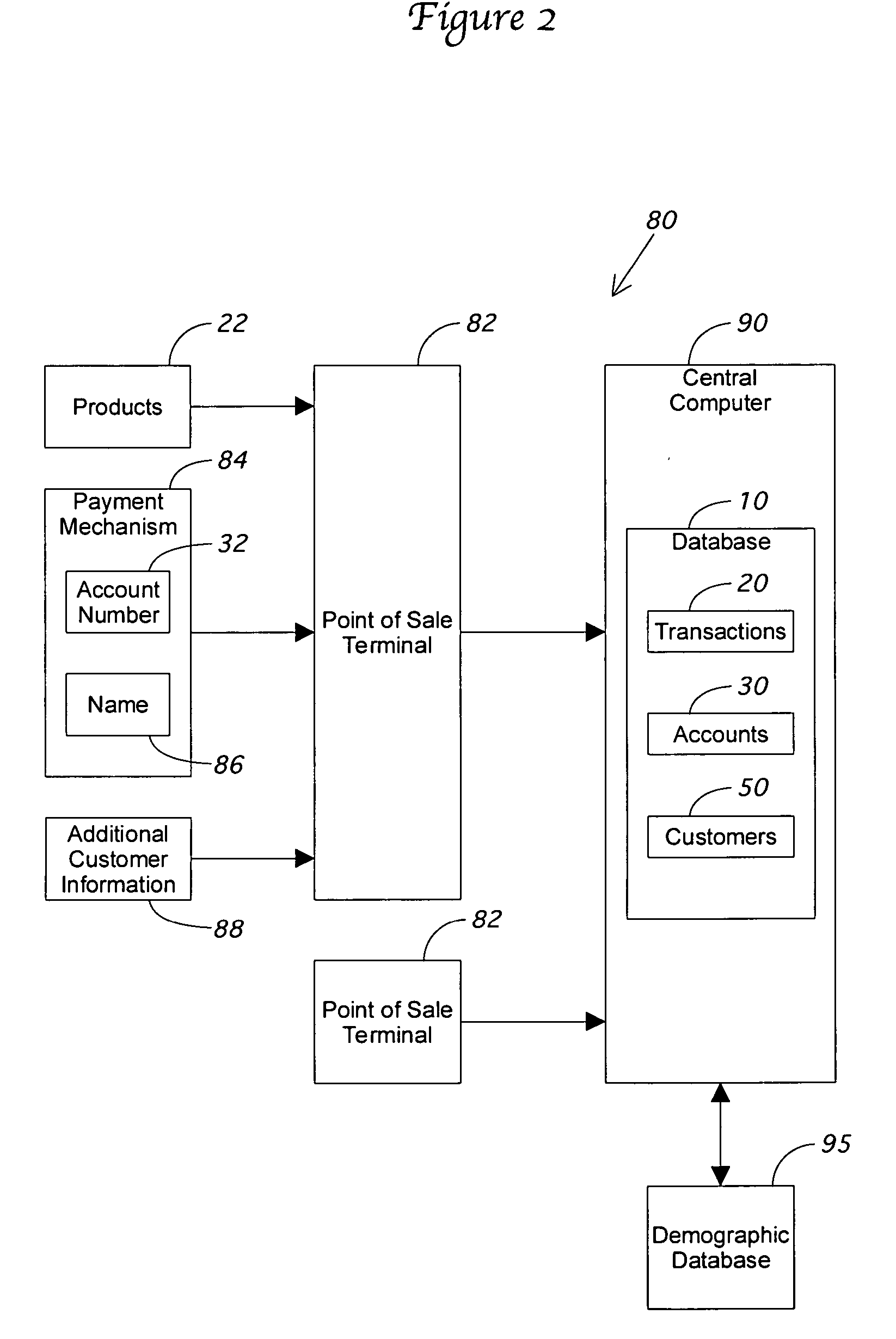Indirect customer identification system and method
a customer identification and indirect technology, applied in the field of indirect customer identification, can solve the problems of customer providing inaccurate information, inaccurate analysis, and type of customer identification, and achieve the effect of high degree of confiden
- Summary
- Abstract
- Description
- Claims
- Application Information
AI Technical Summary
Benefits of technology
Problems solved by technology
Method used
Image
Examples
Embodiment Construction
Database 10
[0020] The present invention uses the database 10 of FIG. 1 to record information about sales transactions, customers, and payment accounts. When a purchase transaction takes place, information about the transaction is stored in the transaction database 20. This information may include a listing of the items purchased 22, as well as the date, time, and location of the transaction.
[0021] Information about the payment mechanism used is stored in the accounts database 30. Example payment mechanisms include credit cards, debit cards, checking accounts, gift cards, and gift certificates. Although statutory changes in the United States prevent credit card numbers taken at a point of sale from being submitted to a third party for customer identification, it is still permissible for retailers to record credit card numbers and associate those numbers with a particular sales transaction. Thus, the records in the accounts database 30 will include information about the payment mech...
PUM
 Login to View More
Login to View More Abstract
Description
Claims
Application Information
 Login to View More
Login to View More - R&D
- Intellectual Property
- Life Sciences
- Materials
- Tech Scout
- Unparalleled Data Quality
- Higher Quality Content
- 60% Fewer Hallucinations
Browse by: Latest US Patents, China's latest patents, Technical Efficacy Thesaurus, Application Domain, Technology Topic, Popular Technical Reports.
© 2025 PatSnap. All rights reserved.Legal|Privacy policy|Modern Slavery Act Transparency Statement|Sitemap|About US| Contact US: help@patsnap.com



